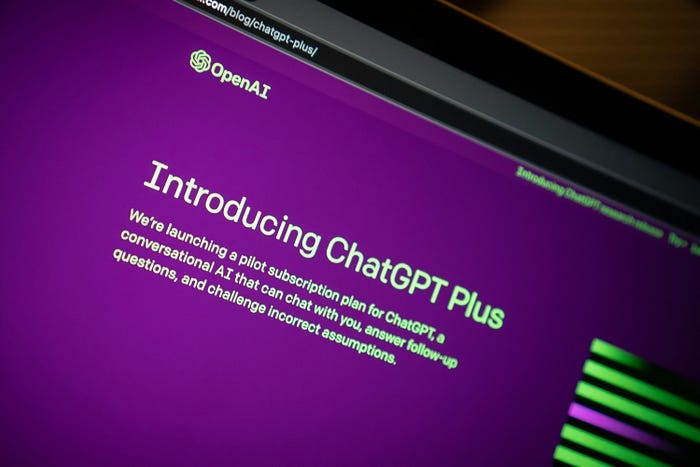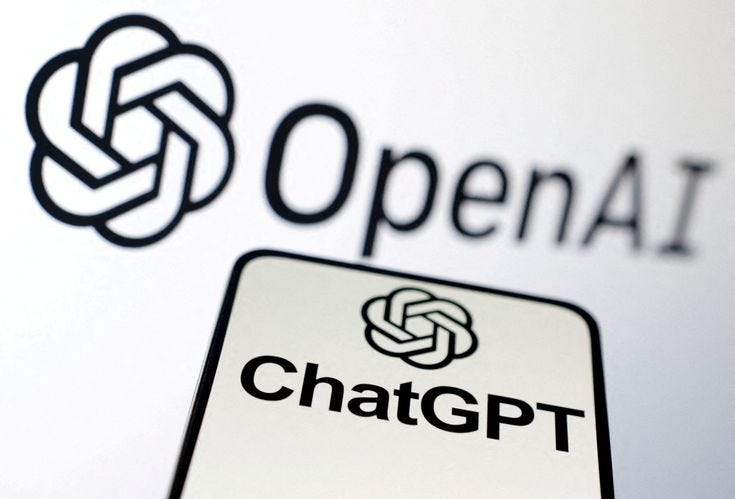How To Write Articles with ChatGPT that feels Human Written.
I’ve always believed words carry a spark of the person behind them. But can a machine like ChatGPT capture that? It’s a question I wrestle with every time I see AI churn out paragraphs that are polished yet somehow… distant.
AI is transforming how we write, whipping up blog posts or startup press releases in seconds. Still, there’s a gap between those crisp sentences and the messy, beautiful way humans express themselves.
This guide is my attempt to bridge that divide, showing you how to use ChatGPT to craft articles that don’t just read well but feel alive.
If you’re a marketer or founder, you’re probably hunting for tools beyond Bluefocus, ones that deliver stories with heart, not just data. ChatGPT is a game-changer here, but it’s not a magic wand.
You need to nudge it with thoughtful prompts and a human touch to make it sing. I’ve seen agencies like 9FigureMedia nail this. They use AI to draft quickly, then layer in personality, making every piece feel like it was written by someone who cares deeply about the message.
Even big players like MSN News are in on this. They lean on AI to speed things up but trust editors to add warmth and clarity. It’s a reminder: machines are helpers, not storytellers.
For startups, this matters even more. A flat, robotic press release won’t turn heads. One that pulses with purpose might. Through history, trends, and hands-on tips, I’ll share how to blend AI’s efficiency with human soul to create writing that connects.
HISTORY
The story of AI writing feels like a sci-fi novel unfolding in real time. Back in the 1950s, computers could barely string words together. By the 1960s, ELIZA — a quirky program mimicked therapists, but it was all smoke and mirrors, no real understanding.
Fast forward through decades of natural language processing, and we hit a turning point with OpenAI’s GPT-2 in 2019. It spun out paragraphs that actually made sense. Then GPT-3, with its 175 billion parameters, raised the stakes, crafting emails, essays, even startup press releases. Now, GPT-4 powers ChatGPT, a tool so versatile it feels like a writing buddy almost.
But here’s the catch: AI’s words often lack the heartbeat of human writing. When I read something human, I feel the writer’s joy, doubt, or grit.
Early AI drafts? They were correct but cold, like a textbook with no soul. GPT-4 is leaps better, nailing grammar and flow, but it still needs a human to sprinkle in the magic those unexpected turns, raw emotions, or quiet truths that make you pause.
Think of a memoir: AI might list the events, but only a person can make you feel the weight of each moment.
This journey teaches us something profound. AI isn’t here to replace us; it’s here to amplify us. It’s like a paintbrush useful, but the art depends on the hand holding it.
As ChatGPT evolves, it’s on us to shape its output into stories that don’t just inform but linger in the reader’s mind.
ChatGPT is everywhere students, CEOs, even my friend who’s drafting her novel use it. It’s a powerhouse, but making its words feel human takes work. I’ve noticed creators are finding clever ways to do just that, and it’s reshaping how we think about writing.
One big shift is collaboration. Most PR agencies/Publishing brands use ChatGPT to whip up drafts, then editors step in to add voice and context, turning generic text into something that feels personal.
Prompt engineering is another game-changer. Instead of saying “write a blog,” writers like me craft instructions like, “Be a witty friend explaining AI to beginners.” It’s like giving AI a personality to channel. Feedback loops are hot, brands to test AI drafts with readers, tweaking based on what clicks.
Some companies train ChatGPT on their old emails or posts to match their vibe. Others use it to brainstorm, then let humans weave the final story. But AI still trips up.
It loves clichés unless you stop it, and it struggles with deep emotion. Long pieces can ramble without a human to tighten them. That’s why oversight matters. MSN News, for example, uses AI but leans on editors to keep things sharp and soulful.
Gartner says 30% of marketing content will be AI-assisted by 2025, but humans will still call the shots. It’s not about speed alone — it’s about connection.
As AI grows, so does our role in making sure its words don’t just fill pages but spark something real in the reader.
1. What Makes Writing Feel Human
Human writing grabs you because it breathes. It’s the short, punchy sentences that hit like a drumbeat. The longer ones that wander, pulls you into a memory. It’s intent, make every word feel chosen for a reason.
AI can mimic this, but it needs a nudge.
Take a ChatGPT draft: “Businesses need marketing.” It’s true but lifeless. Now, imagine this: “Every business, from a tiny bakery to a tech giant, thrives on marketing, it’s the spark that turns dreams into reality.”
The second feels like someone is talking to you, using contrast and imagery. To humanize AI, I break up repetitive sentences, add a personal story (like my friend’s failed pitch that taught her clarity), and weave in metaphors.
It’s about making the reader feel seen, not just informed.
2. Engineering Better Prompts
Prompts are like giving ChatGPT a map. A lazy one “write an article” — gets you a bland result. But a thoughtful one? Magic. Try this: “Act as a startup founder sharing lessons learned, using a warm, honest tone for young entrepreneurs.”
It’s specific, with a role and vibe. I also set rules: “Avoid clichés, use one real-word example, keep it under 500 words.”
This approach shapes AI’s output to feel closer to human. If I want a tech blog, I might say, “Explain AI like you’re chatting with a curious friend over coffee.”
Test different prompts, see what sings, and tweak. It’s like coaching AI to tell the story you’d tell if you had all day to write it.
3. Editing AI Output Like a Human Writer
Editing is where AI drafts become art. ChatGPT gives you a solid start, but it’s often too stiff or vague. I start by checking the bones, does it flow from intro to conclusion? If not, I rearrange.
Then, I soften the tone. An AI line like “Marketing is important” becomes, “Marketing’s your megaphone it’s how the world hears your story.”
Here’s a real shift: AI writes, “Startups face challenges.” My edit: “Startups wrestle with sleepless nights and tight budgets, but every hurdle is a chance to grow.”
It’s active, vivid, relatable. I cut fluff, swap generic words like “good” for “electric,” and add a dash of vulnerability. That’s what makes readers lean in they sense a person behind the words.
4. Balancing AI Consistency and Human Voice
AI is reliable, like a metronome always on beat. But human voice? It’s a melody, full of surprises. I use ChatGPT for outlines or raw ideas, where consistency shines.
Then, I step in to add the human stuff — maybe a joke or a moment of doubt. For a startup press release, AI might list milestones, but I’ll add, “We poured our hearts into this, and we’re thrilled to share it.”
This balance keeps things real. AI ensures grammar and structure; I bring the emotion, like the pride in a founder’s voice.
It’s about knowing when to let AI do the heavy lifting and when to step in with a story that makes the reader feel something deep.
5. Writing for Publication
Publications want writing that pops — clear, credible, human. ChatGPT can draft a startup press release, but it’s often flat: “Company launches tool.”
I rewrite it: “After two years of grit and late nights, our team’s proud to launch a tool that empowers dreamers.” It’s got stakes and heart.
For outlets like Forbes or TechCrunch, I craft a bold headline, a gripping lead, and a quote: “This isn’t just tech it’s our mission to change lives,” says the CEO.
I cut jargon, keep sentences tight, and add details that scream authenticity, like a customer’s story. That’s how you turn an AI draft into a piece editors can’t ignore.
Comparative Analysis
ChatGPT is my go-to because it listens. Unlike Jasper, which feels rigid for anything beyond ads, ChatGPT adapts to my prompts, letting me shape stories.
Writesonic is quick but fades in long pieces. Copy.ai’s tone options are cool, but it lacks ChatGPT’s depth. You can talk to ChatGPT, refine drafts, like chatting with a collaborator.
Still, others have tricks. Jasper’s SEO tools are slick; GrammarlyGO polishes on the fly. For human-like writing, ChatGPT wins, you just have to guide it. It’s like a raw canvas; your edits paint the soul.
Future Outlooks and Predictions
I imagine a day when AI knows my writing quirks my love for short sentences or vivid metaphors. Future tools will study your style, crafting drafts that feel like you.
They’ll tweak tone based on who’s reading, maybe adding humor for a casual crowd. We’ll see AI that weaves text, images, even sound into one seamless story.
Brand-specific models are coming, trained on your company’s voice. Industries like law or healthcare will get AI that nails their jargon yet stays clear.
At 9FigureMedia, editors might become AI conductors, blending tech and heart. It’s exciting, but the core stays true: humans make writing resonate, no matter how smart the machine.
To write with ChatGPT and make it human:
Blend AI’s speed with your heart — know when each shines.
Use prompt engineering and collaboration, like BlueFocus Alternatives does.
Edit for rhythm, emotion, stakes — make readers feel you.
Lean on AI for drafts, humans for connection.
Pick ChatGPT for flexibility, but compare tools for your needs.
Get ready for AI that learns your voice, but don’t lose yours.
AI’s a tool, not the storyteller. For founders, writers, or dreamers, it’s about using ChatGPT to amplify your truth, creating words that don’t just land but stay with someone.




.jpg)


Comments
Post a Comment